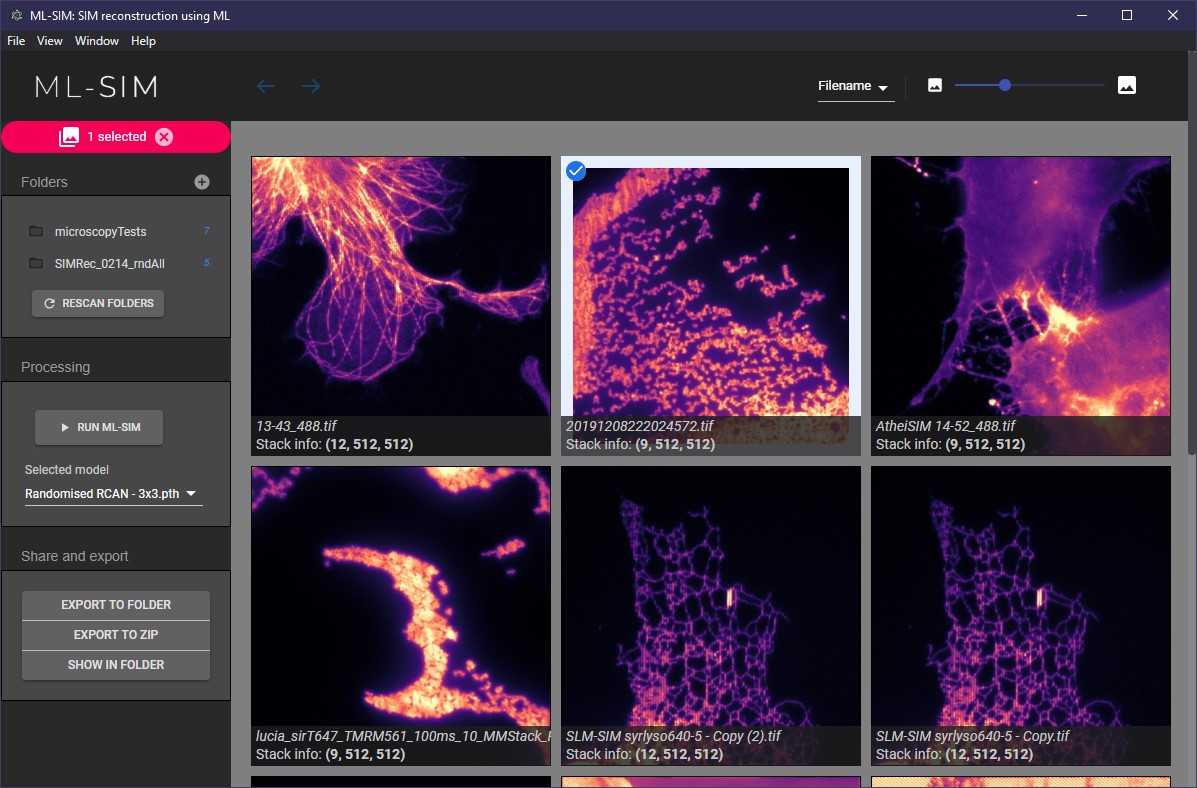ML-SIM: A deep neural network for reconstruction of structured illumination microscopy images
Structured illumination microscopy (SIM) has become an important technique for optical super-resolution imaging because it allows a doubling of image resolution at speeds compatible for live-cell imaging. However, the reconstruction of SIM images is often slow and prone to artefacts. Here we propose a versatile reconstruction method, ML-SIM, which makes use of machine learning. The model is an end-to-end deep residual neural network that is trained on a simulated data set to be free of common SIM artefacts. ML-SIM is thus robust to noise and irregularities in the illumination patterns of the raw SIM input frames. The reconstruction method is widely applicable and does not require the acquisition of experimental training data. Since the training data are generated from simulations of the SIM process on images from generic libraries the method can be efficiently adapted to specific experimental SIM implementations. The reconstruction quality enabled by our method is compared with traditional SIM reconstruction methods, and we demonstrate advantages in terms of noise, reconstruction fidelity and contrast for both simulated and experimental inputs. In addition, reconstruction of one SIM frame typically only takes ~100ms to perform on PCs with modern Nvidia graphics cards, making the technique compatible with real-time imaging. The full implementation and the trained networks are available at http://ML-SIM.com.
PDF Abstract


 DIV2K
DIV2K